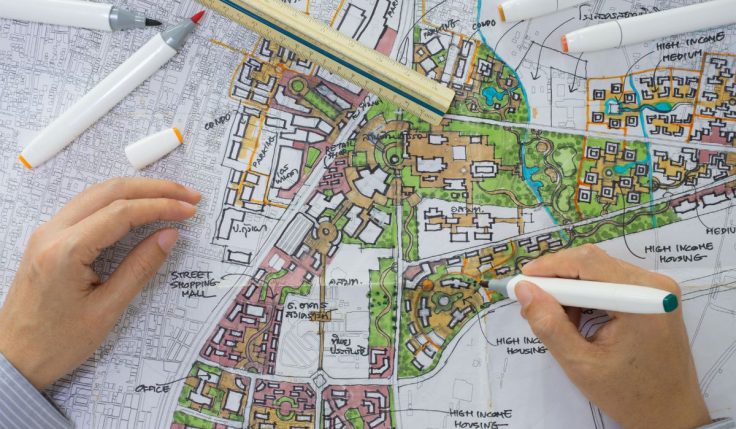Design is not just a tool for aesthetics but also a powerful medium for influencing behaviour, perceptions, and society. As responsible designers, professionals must ensure the creation of meaningful experiences beyond pleasing visuals that have the potential to evoke emotions, drive changes, and contribute constructively to the world.
Designers must consider the importance of the wider impact that their creations have the power to leave. They should delve into guiding the customers through the design process, collaborating effectively through workshops, fostering transparent communication, and designing with a purpose for social change.
In this blog, we will see how important it is for a Communication Designer to understand and design responsibly to ensure a sustainable design process and future.
Understanding Responsibilities in Communication Design:
We live in a world where global challenges demand innovative solutions and communication design emerges as an effective tool for shaping perceptions and driving this change. Understanding responsibilities in communication design is not merely a choice but a necessity for fostering a sustainable future.
Let’s see how understanding responsibilities in communication design leave a profound impact on shaping a world that thrives on sustainability.
Shaping Perspectives: Effective communication in design has the potential to change how people perceive and engage with sustainability. It is important for designers to bear the responsibility of presenting information in a way that does not just educate the audience but also inspires them to take positive action.
Designers must focus on the interconnectedness of social, environmental, and economic factors for the ultimate goal of guiding the audience toward a holistic understanding of sustainability.
Fostering Inclusivity: Ensuring responsibility in Communication Design extends to also ensuring inclusivity. Suitable solutions that are diverse and multifaceted require designers to represent a wide range of voices and expressions.
It is important to incorporate diverse perspectives in the overall design. Communication Design can become a catalyst for change that is both inclusive and also considers the needs of all stakeholders involved.
Also Read: Designing for Accessibility: Inclusive Communication for Diverse Audiences
Navigating Complexity: Challenges in design are often intricate and interconnected. Designers must navigate through them by clearly presenting information.
Responsibilities in Communication Design involve distilling difficult ideas into easy formats enabling a wider audience to understand the urgency and importance of sustainable practices.
Decision Making: Communication designers play an important role in influencing public opinion and this influence also demands ethical decision-making. It is important that the designers are vigilant about the messages that are being conveyed so that things can align with sustainable practices.
Ensuring responsibility in this case lies in promoting authenticity, transparency, and honesty for fostering a relationship of trust between the design message and the audience.
Encouraging Behaviour Change: Communication design is an effective tool for driving behaviour change. By communicating messages that can resonate emotionally and intellectually, most designers can encourage individuals to adopt sustainable design practices.
Assuming responsibility is not just for informing but also to motivate and create a ripple effect that can extend beyond the awareness to take tangible actions.
Technological Advances: As technology keeps evolving, communication design is developing too. The designers must stay attuned to technological advancements and use them for sustainable communication.
Starting from interactive platforms to creating immersive experiences, embracing innovation responsibly enables engaging and impactful communication strategies.
Long-Term Impact: Sustainability ensures long-term results and so should communication design. Responsible designers must consider the long-term impact of their work by making sure that they create campaigns and messages that stand through for long.
It is important to foster a sense of continuity and therefore, communication design should become a driving force in sustaining a regular momentum for creating a positive change.
Transparent Communication: Transparent Communication is key to ensuring that the customers understand the reasoning behind design choices and the potential impact on the brand and audience. In the world of design, sustainability has become important to consider. Adopting sustainable design practices does not just benefit the environment but also aligns with social responsibility as designers.
Effective communication is the cornerstone of any successful design project and designers should understand the importance of transparent communication in ensuring strong customer partnerships. It is not merely about delivering information but also about creating a collaborative design process that ensures that customers feel valued.
Summing It Up:
The importance of understanding responsibilities in Communication Design for ensuring a sustainable future cannot be overstated. Designers have the power to shape narratives, influence customer behaviours, and drive social change.
Embracing responsibilities is not merely an ethical choice but also a strategic imperative for a world that aspires to live sustainably. The future is in the hands of all designers who can communicate effectively and responsibly.
In case you wish to contribute to building a sustainable world with the power of design then pursue a program such as a 4-YEAR Bachelor of Design in Communication Design to learn more about responsibilities for fostering a collaborative partnership that can go beyond aesthetics.






